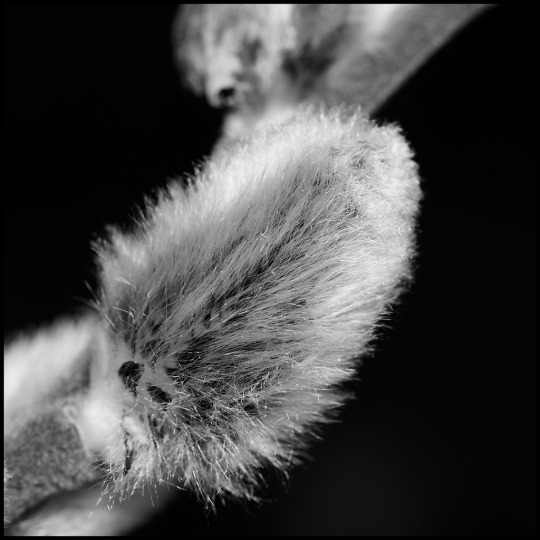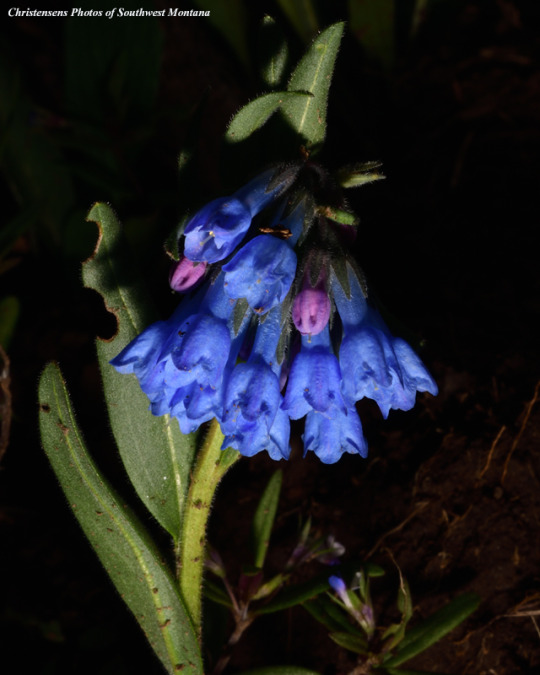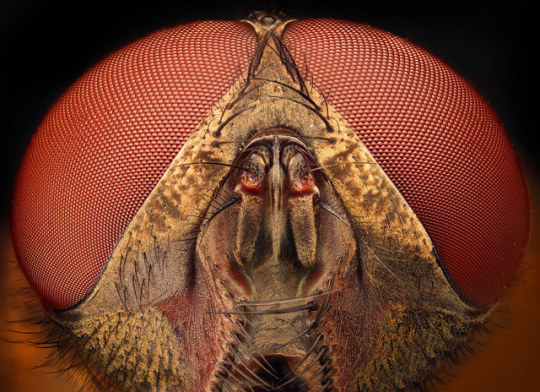#Nikon R1C1
Text
Pussy Willow
My Wife brought some Pussy willow home to decorate for Easter.They made a great subject for my new 105mm macro and even newer Nikon R1C1 speedlight set-up.
I watched a few YouTube videos to get the hang of the basics I also read and re-read the manual and started making test shots. This was the one That I thought looked best. You can count the hairs and what’s more This shot was handheld at f/14…

View On WordPress
6 notes
·
View notes
Text

#IFTTT#Flickr#geranium#wild#flower#wildflower#blossom#macro#micro#nikon#nikonz#zfc#nikkor#r1c1#nature#spring#seasons#native
3 notes
·
View notes
Text

Bluebells
Now that it is February, I am not getting out much. So here is a bluebell that I found in Selway Meadows in the spring of 2023.
Nikon D500, Manual Mode, Nikor 18-55mm VR II, Nikon R1C1 Closeup Flash Kit, F/32, ISO 50, ET 1/250, Focal Length 48mm, Handheld, Vibration Control on
#bluebell#blue#wild#wildflower#plant#nature#beaverhead#beaverhead-deerlodge national forest#photos of southwest montana#dillon#brad christensen#montana#photographer#photography#spring#springtime
26 notes
·
View notes
Photo

Fly Eyes by davidshred 123 exposures, wemacro 15um, Olympus UMPlanFI10x, Raynox 250 tube lens, Nikon D7200, Nikon r1c1 flashkit, Zerene Stacker, Photoshop, Iso100 1/200 https://flic.kr/p/2h5RHMR
0 notes
Photo

#Repost @griya.rr Fresh Pulp... Nikon D90 + Lens60mm Nikon + Flash R1C1 Nikon #dentalphotography #pulp
3 notes
·
View notes
Photo

These bees (Diadasia diminuta) sleep in the orange flowers called Globe Mallows.” The Diadasia diminuta – or simply the globe mallow bee – collects pollen from its favorite food plant, globe mallow (Sphaeralcea). According to Forest Service at the United States Department of Agriculture, their nests are commonly found in partially compacted soil along the margins of dirt roads in the western United States. The globe mallow bees play a major role in the flower’s reproduction. When it comes to bees sleeping, there are a few interesting details. “They don’t have eyelids, so you can’t just look for bees with their eyes closed,” Brandon Hopkins, a bee researcher at Washington State University, said. “By carefully watching bees, scientists have found that honey bees stop moving their antenna and in some cases fall over sideways.” The nuances of exactly how and where a bee sleeps depend on where it lives. After all, there are more than 20,000 known species of bees living on our planet. Honey bees, for example, work day and night and take shifts sleeping inside the hive. Their sleep patterns change as they grow up. Younger bees sleep less but older bees catch between 30 minutes and an hour and a half each night, taking little naps of about 15 to 30 seconds at a time. But these two globe mallow bees cuddled together in the flower and made the perfect composition, presenting Joe with what became his winning shot for the day. “He used a Nikon d750 and a 150mm macro lens along with an R1C1 Nikon macro flash,” he said. _______________________________ Jmneelyphotography.com @jmneelyphotography _______________________________ #bees #bee #flower #nature #photography #photographer #westcoast #spiritual #love #cuddle #sleep #positivity #positivevibes #positiveenergy #indigo #higherconciousness #awesome #cute #inspiration (at Phoenix, Arizona) https://www.instagram.com/p/Bz1CSFJHN52/?igshid=19fubbpi1ge5k
#bees#bee#flower#nature#photography#photographer#westcoast#spiritual#love#cuddle#sleep#positivity#positivevibes#positiveenergy#indigo#higherconciousness#awesome#cute#inspiration
0 notes
Text
Meike MK-MT24 is a Solid and Affordable Wireless Macro Flash
Meike MK-MT24 is a Solid and Affordable Wireless Macro Flash
The Meike MK-MT24 is one of the most interesting lighting products I’ve ever used. The concept of this product is similar to some macro flash systems that have been on the market for years — especially the Nikon R1C1 — but while I knew of their existence, I’ve never once considered them due to their exorbitantly high price (the R1C1 is over $700).
The Meike MT-MT24 system, while at first…
View On WordPress
0 notes
Photo

Dragonfly Having a Snack 5226x3128 Nikon D7100 Nikkor 105mm with R1C1 Flash
0 notes
Text
Happy Easter Everyone

View On WordPress
2 notes
·
View notes
Text
Photos of Bees Sleeping in a Flower
Wildlife photographer Joe Neely recently captured beautiful photos of an unusual sight that most people may not even know is a thing: bees sleeping in flowers.
Neely and his fiancée, Niccole, had stopped to shoot a patch of flowers off the side of the highway when Niccole suddenly noticed that some of the flowers had motionless bees within them.
“I came over and study it for a while and more bees showed up,” Neely tells Bored Panda. “Soon, all the vacant flowers were occupied and this one bee was left out. She crawled over to this open flower and got inside with the other one. I was watching as he stumbled around almost drunk-like and then got settled in.”
Neely then captured a beautiful series of photos with his Nikon D750, 150mm macro lens, and R1C1 Nikon macro flash showing two bees snuggling up to sleep within a flower.
It turns out these bees (diadasia diminuta) sleep inside specific flowers called globe mallows — this type of bee is therefore known as the globe mallow bee.
“I never knew that bees slept in flowers,” Neely says.
You can find more of the photographers work on his website, Facebook, and Instagram.
Image credits: Photographs by Joe Neely and used with permission
source https://petapixel.com/2019/04/18/photos-of-bees-sleeping-in-a-flower/
0 notes
Text

Shooting Star
A shooting star in Fox Park. The entirety of Fox Park was covered with them.
Nikon D500, Manual Mode, Nikkor 85mm Micro Lens, R1C1 Close-up flash kit, F/36, ISO 50, ET 1/250, Focal Length 85mm, Handheld, Vibration Reduction on
#Shooting#star#shooting star#wild#flowers#wildflower#nature#spring#photography#springtime#rocky#mountain#rockies#rocky montains#beaverhead#beaverhead-deerlodge national forest#photos of southwest montana#dillon#wildlife#brad christensen#montana#photographer#maco
7 notes
·
View notes
Text
Photos of Bees Sleeping in a Flower
Wildlife photographer Joe Neely recently captured beautiful photos of an unusual sight that most people may not even know is a thing: bees sleeping in flowers.
Neely and his fiancée, Niccole, had stopped to shoot a patch of flowers off the side of the highway when Niccole suddenly noticed that some of the flowers had motionless bees within them.
“I came over and study it for a while and more bees showed up,” Neely tells Bored Panda. “Soon, all the vacant flowers were occupied and this one bee was left out. She crawled over to this open flower and got inside with the other one. I was watching as he stumbled around almost drunk-like and then got settled in.”
Neely then captured a beautiful series of photos with his Nikon D750, 150mm macro lens, and R1C1 Nikon macro flash showing two bees snuggling up to sleep within a flower.
It turns out these bees (diadasia diminuta) sleep inside specific flowers called globe mallows — this type of bee is therefore known as the globe mallow bee.
“I never knew that bees slept in flowers,” Neely says.
You can find more of the photographers work on his website, Facebook, and Instagram.
Image credits: Photographs by Joe Neely and used with permission
from Photography News https://petapixel.com/2019/04/18/photos-of-bees-sleeping-in-a-flower/
0 notes
Text
Alberto Ghizzi Panizza: Consejos de fotografía macro
Alberto Ghizzi Panizza es uno de los fotógrafos de estilo macro más innovadores, talentosos y únicos de Europa. Con una carrera que abarca casi dos décadas, el italiano es un reconocido maestro del arte de la fotografía macro.
Recientemente, Alberto realizó una sesión fotográfica con Nikon en el entorno natural de Bilkyrkogården Kyrkö Mosse, un cementerio de coches situado cerca de Ryd, en Linköping (Suecia) para mostrar “La belleza del óxido” oculta. Aquí comparte sus siete mejores consejos de fotografía para el disparo macro.
Jugar con la profundidad de campo: comprender la profundidad de campo es uno de los primeros grandes obstáculos en la fotografía macro. Necesita saber cómo el diafragma, la distancia focal y el enfoque trabajan en armonía para controlar la nitidez de sus imágenes y lograr esa toma tan especial. Básicamente, cuanto menor sea el sujeto y mayor sea la relación de reproducción, más reducida será la profundidad de campo. El uso de una profundidad de campo adecuada ayudará a capturar intrincadas imágenes macro, tanto si se trata de una flor como de un insecto, o a mostrar la belleza del óxido oculta, como en este caso.
Todo se centra en el diafragma: encontrar el equilibrio adecuado entre la nitidez del sujeto y el fondo difuminado con un bonito efecto bokeh es uno de los aspectos más interesantes y desafiantes de la fotografía macro; y no se vuelve más sencillo, incluso después de casi dos décadas de trabajo en fotografía macro. Descubrí que la clave es utilizar el diafragma correcto. Es más fácil aislar a los sujetos con objetivos macro que tengan un diafragma pequeño, como el AF-S DX Micro NIKKOR 85mm f/3.5G ED VR o el AF-S VR Micro-Nikkor 105mm f/2.8G IF-ED; mientras que los objetivos más cortos son mejores para contextualizar a los sujetos, por ejemplo, el AF-S DX Micro NIKKOR 40mm f/2.8G y el AF-S Micro NIKKOR 60mm f/2.8G ED, que tienen ángulos de visión más amplios. Yo aconsejo no utilizar diafragmas mayores de f/16 para evitar el fenómeno físico de la “difracción”, que puede eliminar los importantísimos factores de nitidez y contraste.
Invierta en los accesorios adecuados: si desea aumentar las capacidades de ampliación de su objetivo macro, especialmente para superar el límite de la relación de reproducción de 1:1, los accesorios son muy importantes. La forma más sencilla de hacerlo es utilizando tubos de extensión, que separan los elementos ópticos del cuerpo de la cámara. Cuanto más alejemos el objetivo del cuerpo de la cámara, más cerca quedará el sujeto; por lo tanto, cuantos más tubos utilicemos, mayor será la relación de reproducción. Una de las dificultades a las que me enfrento a menudo es tener que encontrar la distancia de trabajo correcta entre la cámara y el sujeto. Si se acerca demasiado, no podrá enfocar nada; por lo que se trata de encontrar el equilibrio adecuado.
Trabajar sus ángulos: cuando se realiza un solo disparo, el truco para enfocar todo el sujeto es permanecer con la cámara (más específicamente, con la superficie del sensor) en la orientación más paralela al sujeto. Puede ser difícil enfocar por completo a una criatura multidimensional, como una mariposa. Si las alas están paralelas a la cámara y a su sensor, es relativamente fácil capturar una imagen definida de toda el ala; pero si las alas se encuentran en ángulo, solo quedarán enfocados unos pocos centímetros del ala. Aquí es donde el apilamiento del enfoque puede ser de gran ayuda. Uno de mis procesos favoritos consiste en tomar una progresión o secuencia de disparos desde el punto más cercano hasta el más lejano del sujeto. Esto nos permite obtener una imagen en la que el sujeto esté totalmente enfocado y definido. A continuación, puede mezclar estos elementos en la etapa de postproducción para lograr una imagen con el sujeto completo perfectamente enfocado; esta es una excelente técnica. Para crear una pila, recomendaría el uso de todos los elementos en el modo manual; por ejemplo, el enfoque, la temporización, la sensibilidad ISO, el diafragma y el balance de blancos.
Gestionar sujetos en movimiento: a fin de superar los problemas de los sujetos en movimiento, utilice un flash (como el R1C1 de Nikon), con el que podrá utilizar temporizaciones muy rápidas para congelar el movimiento del sujeto. Esta opción resulta especialmente útil cuando se trata de capturar insectos obreros, como las abejas, o mi favorito, la libélula.
Utilizar objetivos con Reducción de la vibración: en muchas ocasiones me encuentro con que no es posible ni conveniente el uso de un trípode para capturar un sujeto. En este caso, los objetivos con la función Reducción de la vibración (VR) integrada son excelentes para evitar el efecto difuminado por movimiento, causado a menudo por los movimientos propios de nuestro cuerpo cuando capturamos imágenes a pulso.
La práctica logra la perfección: y finalmente, como con toda fotografía, la mejor manera de perfeccionar el arte de la fotografía macro es practicar con una amplia gama de objetivos, sujetos y estados lumínicos diferentes. En esta sesión fotográfica, el sujeto del óxido en los degradados coches supuso un reto completamente nuevo, dado que nunca había fotografiado nada parecido antes. Pero gracias al equipo, los accesorios y los conocimiento en fotografía macro adecuados, pude hacer pruebas para producir unas composiciones inusuales e impactantes. Aprendí muchísimo de la experiencia.
Puede ver la puesta en práctica de los consejos de Alberto en este vídeo:
youtube
El post Alberto Ghizzi Panizza: Consejos de fotografía macro fue publicado por primera vez en DNG Photo Magazine.
http://ift.tt/2uIzKkE
via Fotografo Barcelona
0 notes
Photo

Nikon SB R1C1 Ring Light/Macro Flash for Nikon http://rover.ebay.com/rover/1/711-53200-19255-0/1?ff3=2&toolid=10044&campid=5337410320&customid=&lgeo=1&vectorid=229466&item=332114790055
0 notes
Text

Spring Flower
Seeing it is the first day of Spring I decided to post one of my favorite flowers, a meadow camas taken in one of my favorite places, Selway Meadows. I took this camas last spring.
Nikon D500, Manual Mode, Nikor 85mm VR Micro lens, R1C1 Close up flash kit, F/36, ISO 50, ET 1/250, Focal Length 85mm, Handheld, Vibration Reduction on
#meadow#camas#meadow camas#wild#wildflower#plant#Flower#nature#beaverhead#beaverhead-deerlodge national forest#photography#photos of southwest montana#dillon#brad christensen#montana#photographer#spring#springtime
8 notes
·
View notes
Text

Dog-Toothed Violet
A dog-toothed violet I found near Short Creek. The skeeters were so bad Lilly laid down between the flower and me as if to say enough time to go.
Nikon D500, Manual Mode, NIKKOR 85mm Micro Lens, R1C1 Close up flash kit, F/36, ISO 50, ET 1/250, Focal Length 85mm, Handheld, Vibration Reduction on
#dog toothed#dog toothed violet#violet#wild#flower#wildflower#nature#spring#springtime#rocky#mountains#rockies#rocky montains#beaverhead#beaverhead-deerlodge national forest#macro#photography#photos of southwest montana#dillon#montana#brad christensen
6 notes
·
View notes